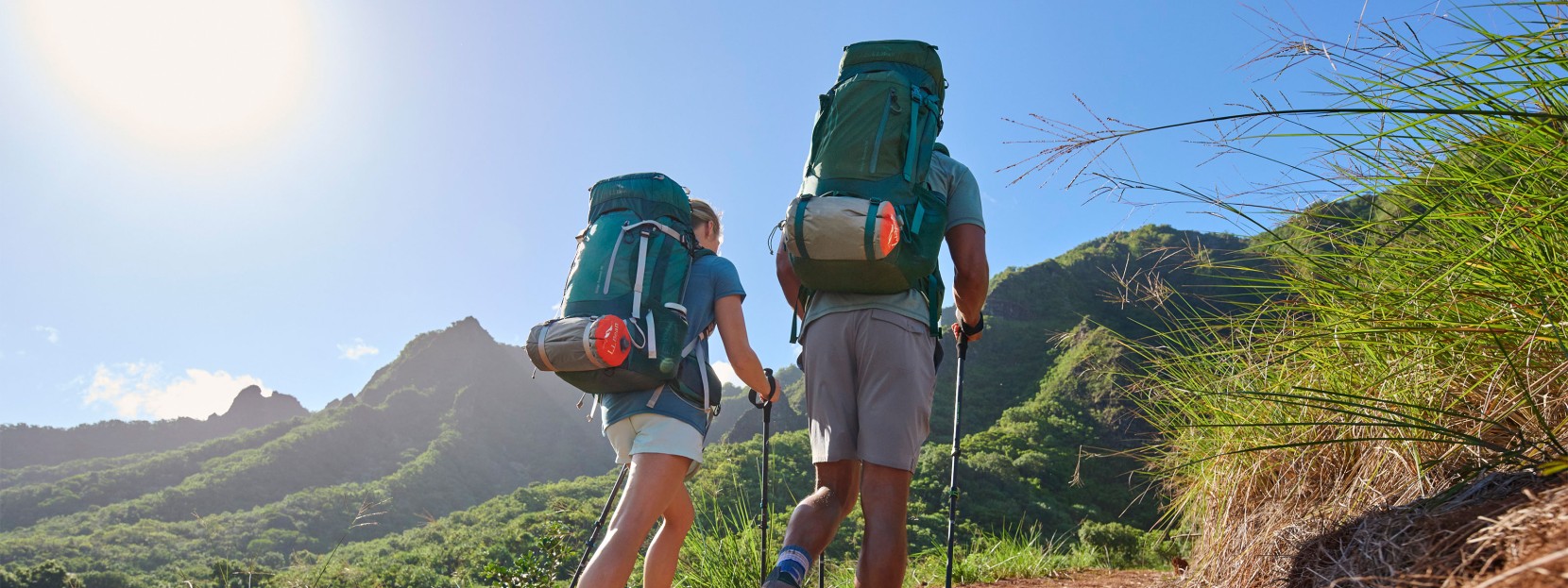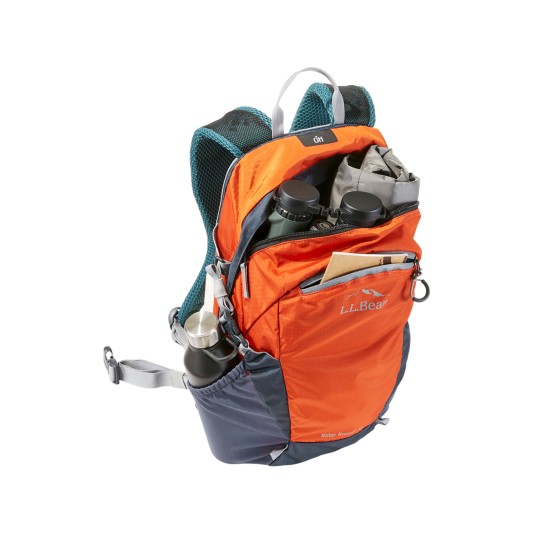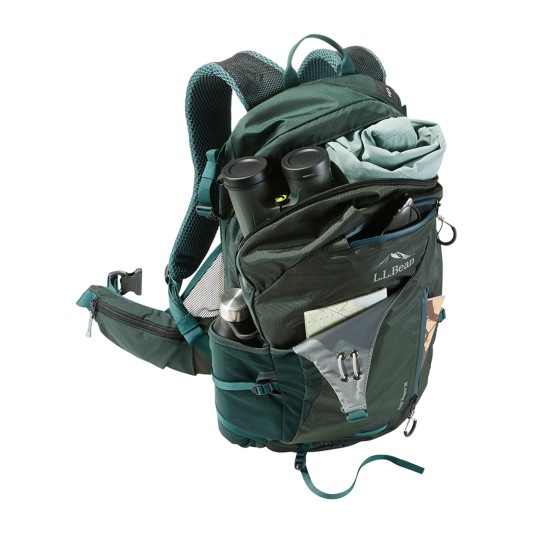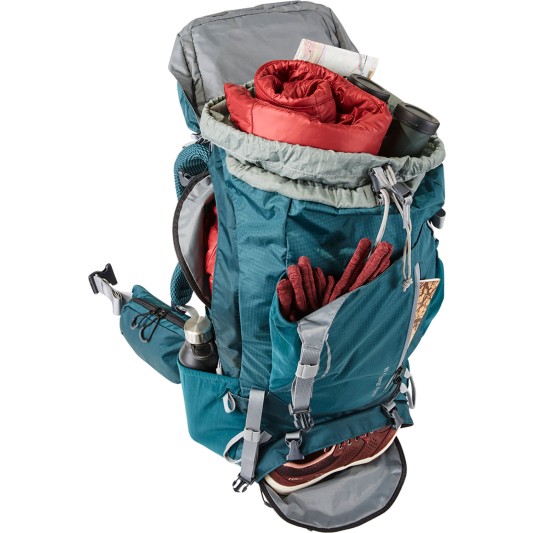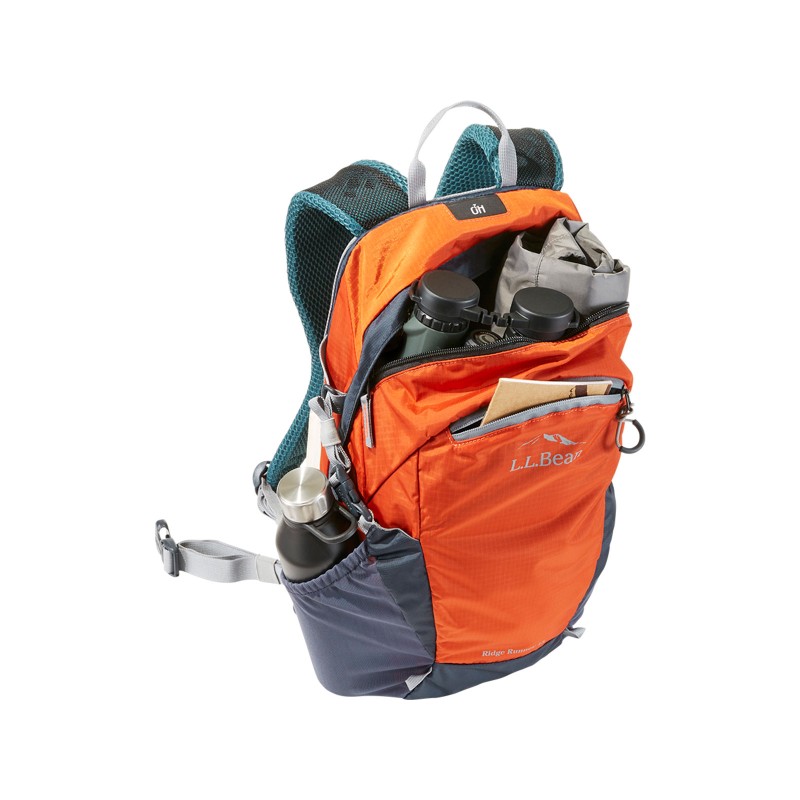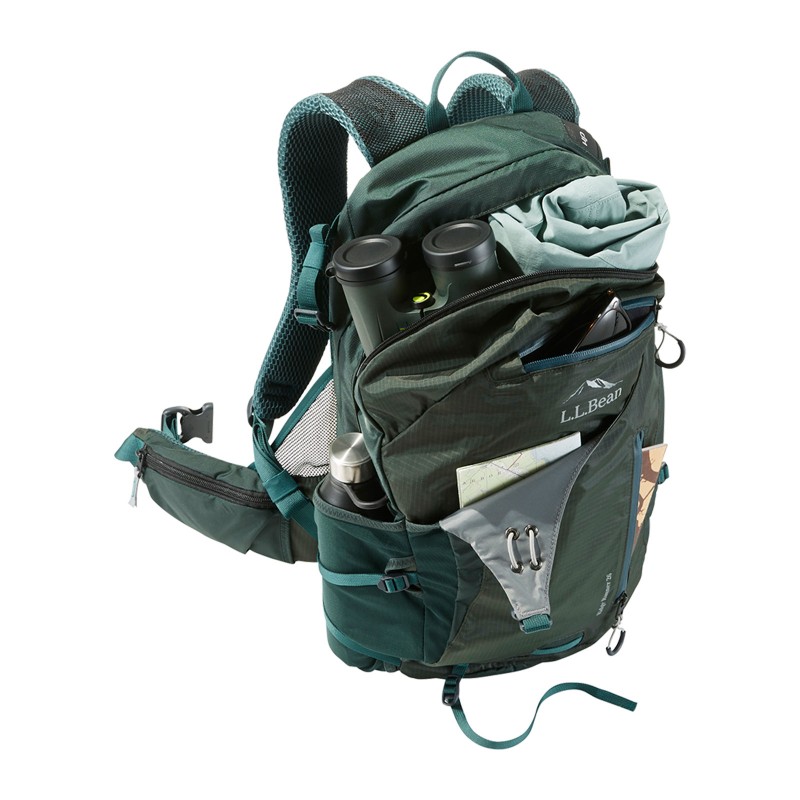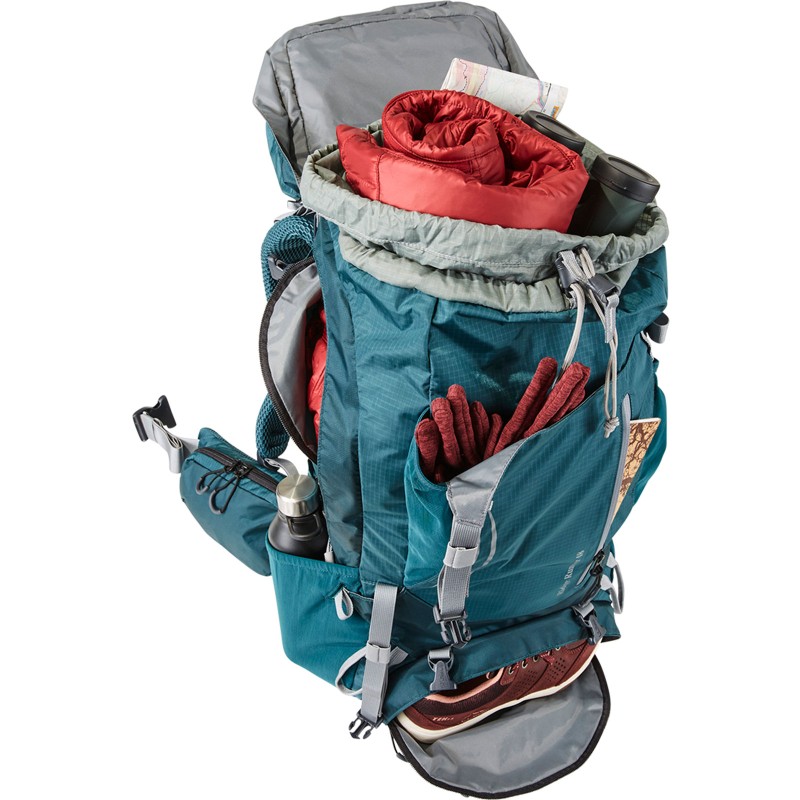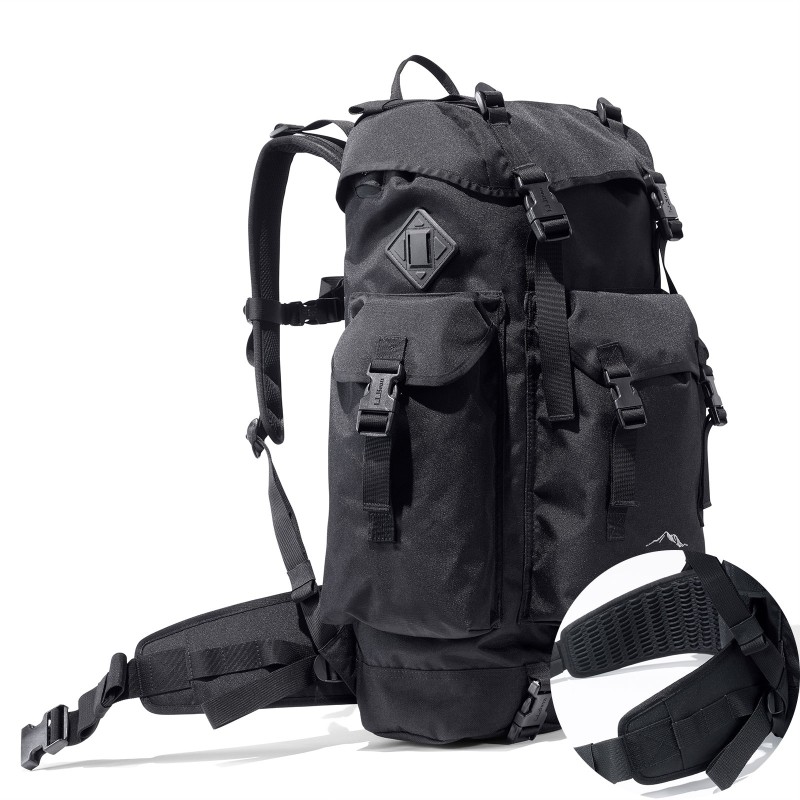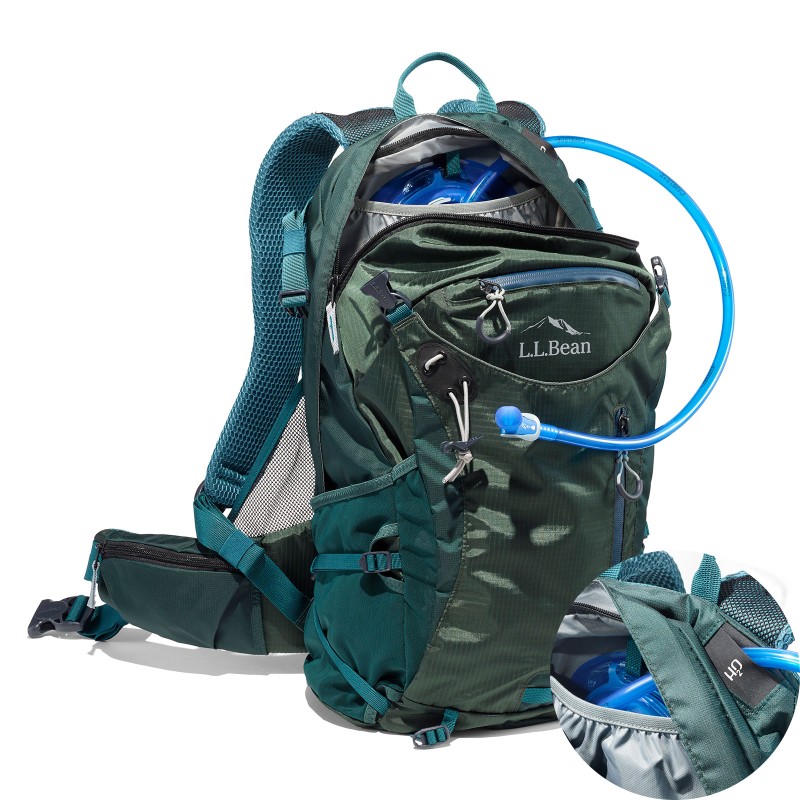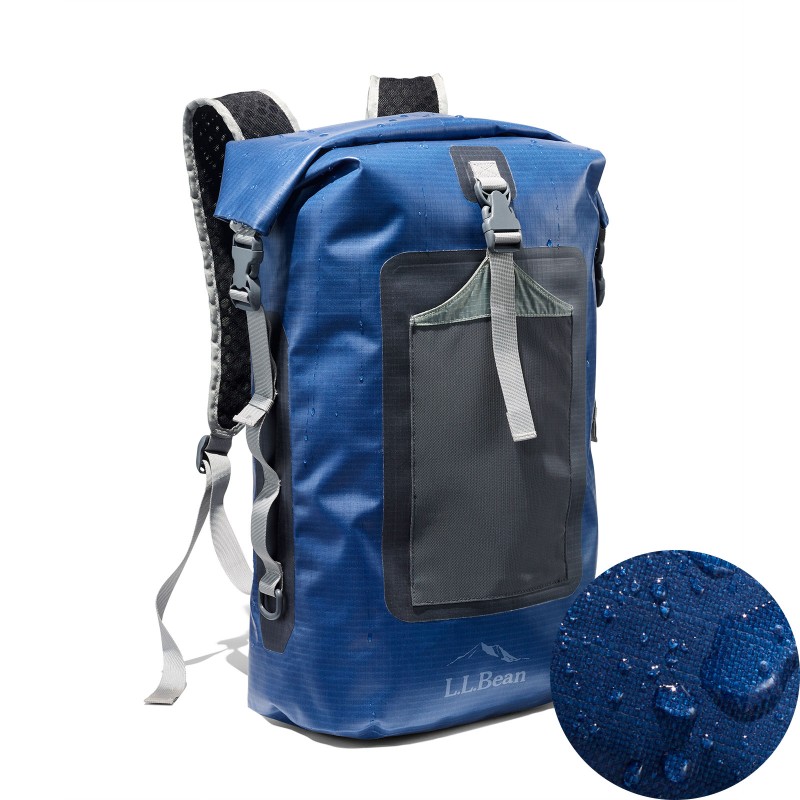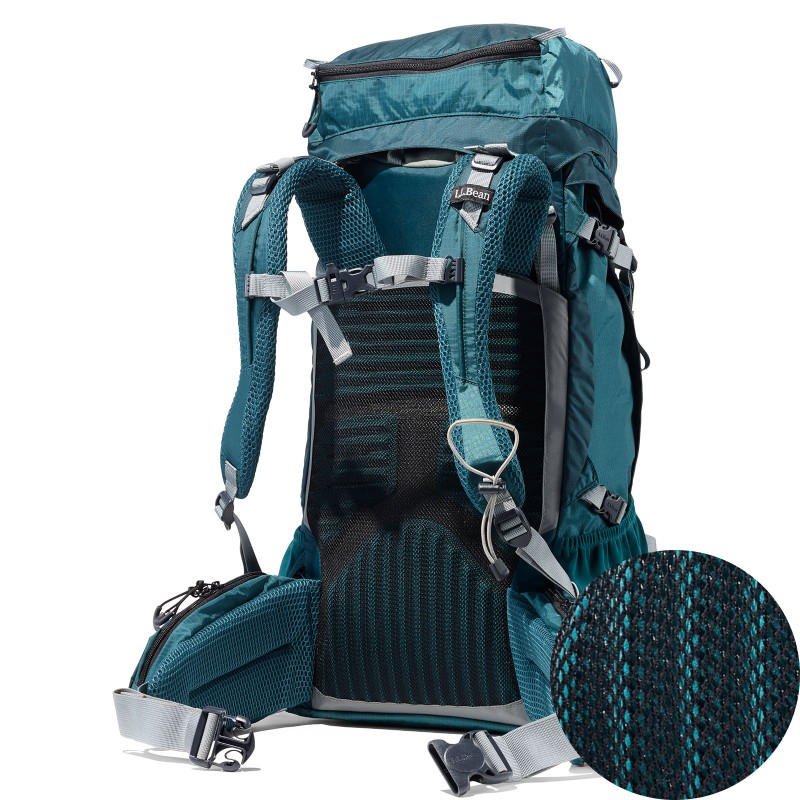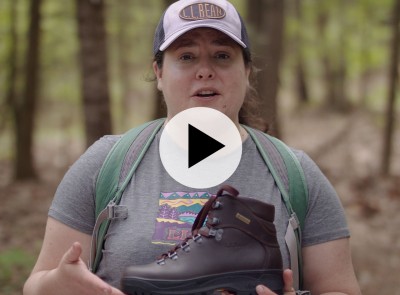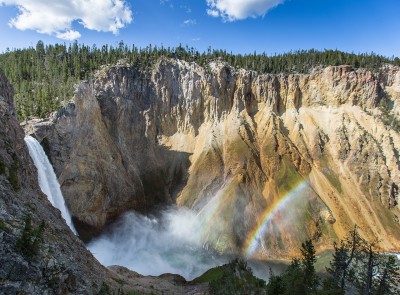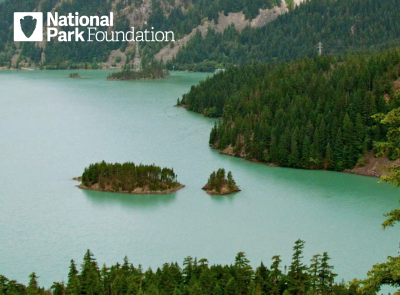How to Choose Your Next Hiking Pack
With so many hiking packs to choose from, it can be overwhelming to know which one is right for your needs. Here are three simple questions to consider when searching for your next pack.
4 Min. Read | Hiking
1. How Long is Your Hike?
Whether you’re going for a short walk in the woods, summitting multiple peaks in a single day or venturing out on a multi-day trek, having the right sized pack is important for a successful outing.
Pack sizes are usually measured in Liters and can range from just a couple of Liters to over 65 Liters. So how do you determine what pack size is right for you? A great place to start is to think about the length of your hike.
Short Hikes (up to 13 Liters)
For short walks on local trails or a day around town, these lightweight, compact packs are designed to carry the essentials and not much else. They're also easily stashed in larger packs or duffle bags for travel. Experienced hikers and trail runners may look to these smaller packs to keep things fast and light as they move quickly over varied terrain.
For example, a 10-Liter pack might hold:
- • a few snacks
- • a lightweight rain jacket
- • a headlamp
- • a hydration bladder
Day Hikes (13-30 Liters)
These small to medium sized packs are ideal for longer days on the trail. They have enough space for all the essentials and plenty of room for a little more. This extra space is also handy if you’re hiking with kids and carrying supplies for them as well.
A 25-Liter pack can carry:
- • food for a longer day on the trail
- • a lightweight rain jacket
- • an additional insulating jacket or vest
- • two Liters of water
- • a small first aid kit
- • a headlamp
Multi-Day Hikes (30 Liters or more)
These are the packs you’ll reach for when heading out on extended trips – whether it’s a long weekend or a six-month thru hike. They’re designed to comfortably carry heavier loads over long distances and may even be equipped with features like a suspension system or a sleeping bag compartment. Usually, the longer or more isolated the trip, the bigger the pack you'll need.
A 50-Liter pack can hold everything listed in the Day Hikes section as well as:
- • a change of clothes
- • food for a few days
- • cooking supplies (camp stove, fuel, cooking pot)
- • a water filter
- • a packable sleeping bag and sleep pad
- • a small backpacking tent
Short Hikes (up to 13 Liters)
For short walks on local trails or a day around town, these lightweight, compact packs are designed to carry the essentials and not much else. They're also easily stashed in larger packs or duffle bags for travel. Experienced hikers and trail runners may look to these smaller packs to keep things fast and light as they move quickly over varied terrain.
For example, a 10-Liter pack might hold:
- • a few snacks
- • a lightweight rain jacket
- • a headlamp
- • a hydration bladder
Day Hikes (13-30 Liters)
These small to medium sized packs are ideal for longer days on the trail. They have enough space for all the essentials and plenty of room for a little more. This extra space is also handy if you’re hiking with kids and carrying supplies for them as well.
A 25-Liter pack can carry:
- • food for a longer day on the trail
- • a lightweight rain jacket
- • an additional insulating jacket or vest
- • two Liters of water
- • a small first aid kit
- • a headlamp
Multi-Day Hikes (30 Liters or more)
These are the packs you’ll reach for when heading out on extended trips – whether it’s a long weekend or a six-month thru hike. They’re designed to comfortably carry heavier loads over long distances and may even be equipped with features like a suspension system or a sleeping bag compartment. Usually, the longer or more isolated the trip, the bigger the pack you'll need.
A 50-Liter pack can hold everything listed in the Day Hikes section as well as:
- • a change of clothes
- • food for a few days
- • cooking supplies (camp stove, fuel, cooking pot)
- • a water filter
- • a packable sleeping bag and sleep pad
- • a small backpacking tent
Keep in mind, the “right” pack size can be very subjective – someone with ultralight gear might use a 30-Liter pack for multi-day trips and someone who wants total comfort in camp might use a 60-Liter pack for an overnight. For a more in-depth look at what to pack for a hike, check out our How to Pack for a Hike video.
2. What Are the Conditions?
Just like the length of your hikes, the conditions you plan to hike in will determine the size of the pack you need and the features you should look for.
Cold Weather
Heading out in the cold? You might need a bigger pack than what you use for summer hikes. Besides carrying extra layers to help keep warm, cold weather gear just tends to take up more space. Consider sizing up to be sure you’ll have plenty of room for all your winter gear.
Warm Weather
Warmer temperatures may mean less bulky gear than colder temperatures, but there are a couple of pack features you should consider when it’s hot. Hydration is always important, especially when it’s warm and/or humid, and you should know how much water you’ll need and how much you can carry. You may also want to consider whether a pack has a ventilated back mesh panel or straps to help keep you drier and cooler.
3. What Else Do You Need?
Hiking packs come with many different useful features depending on what your needs are. Here are a few to consider when trying to decide what pack is right for you.
Waistbelt
A waistbelt can make hiking more comfortable in a couple of different ways. The first is by helping secure the pack to your body. If you’re hiking on technical trails and bouncing from rock to root, or trying to duck under a branch, a waistbelt will help prevent the pack from bouncing around. For larger packs, waistbelts also help distribute the weight more efficiently.
Hydration
For easy hydration on the go, some packs come with a built-in hydration sleeve to hold a hydration bladder. How you hydrate, whether with bottles or a hydration bladder, is a matter of personal preference. Depending on the size, hydration bladders can hold as much water, if not more, than a standard bottle. And because the tube coming out of the bladder is usually secured to one of the backpack straps, there’s no need to wrestle with getting a bottle out of and back into the side pocket of the pack every time you’re thirsty.
Waterproof Materials
Many packs nowadays are built with water-resistant materials that protect your gear from light drizzle or dew on the ground. But for peace of mind in very wet conditions, some packs are built with 100% waterproof materials. Besides hiking, these types of packs are great for water sports or commuting by bike or foot in wet weather.
Ventilation
It’s common for hiking packs to have some sort of mesh panel on the back to allow better airflow as you hike. In the summer, this airflow helps keep you cooler by allowing sweat to evaporate more easily. In the winter, this same airflow can keep you warmer for the same reasons by helping keep your back dry. Some packs may even have ventilated straps as well.
Get ready for your next hiking trip – with gear designed to make it even easier to get outside.
Get ready for your next hiking trip – with gear designed to make it even easier to get outside.
Related Stories

